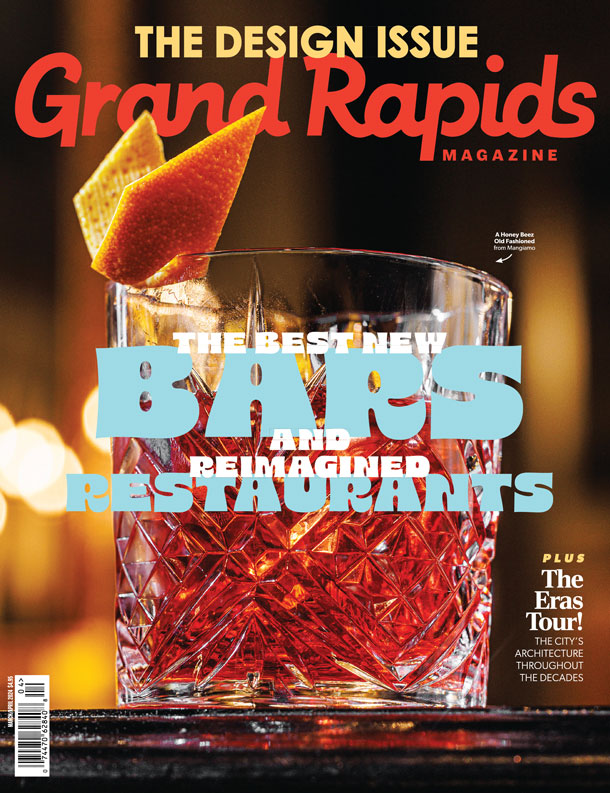
For years, Grand Rapids has been in the midst of a surge in downtown development — with a forest of tower cranes building apartments at Monroe North, or expansions along Medical Mile, or new hotel space in the city center.
But city leaders are closely watching the future of one property in particular: 201 Market Ave. SW, where in just a few short years, they hope a 12,000-capacity amphitheater will expand the downtown footprint southward and bring a jolt of development to a row of riverside lots.

That could be huge as the national economy slows, with inflation and rising interest rates tightening budgets for major development projects — and potentially thinning that sky-scraping clutch of construction cranes. The new amphitheater project has been a darling of local leaders for years, but a shifting economy makes it look especially important now, when it stands to keep catalyzing Grand Rapids.
“Our city has grown over the last two decades,” said Kara Wood, the executive director of Grand Action 2.0, a key private development group driving the project. She called the amphitheater plan a “bold vision” for the city’s growth.
“We’re trying to continue that momentum regardless of the economic situation,” she said.
The project could soon be moving to a new phase. 201 Market Avenue SW is currently owned by the city but is expected to be sold as soon as June to the Grand Rapids-Kent County Convention/Arena Authority, or CAA – a key milestone that had been held up in the planning process in recent years.

“We have closing checklists,” Kate Berens, Grand Rapids’ deputy city manager, said. “The typical kind of real estate transaction, we’re checking through those things and feeling pretty confident that the CAA will feel like it’s in a position to close on that time frame.”
A successful sale would be a signal that the project is speeding toward construction, something Wood said should “absolutely” happen soon.
Richard MacKeigan, executive director of the CAA, said in a March interview that Grand Action is in the “driver’s seat” for organizational work that’s underway ahead of that sale — managing the needs of the city and the CAA through closing and focusing on some final design and pricing. Previously, the project has been estimated to cost around $116 million, likely to be paid for with a mix of private and public funding.

“The initial costing has come in to identify that it can fit within the (project’s) budget,” he added. “Now it’s a function of, okay, exactly how many seats are under cover? Exactly how many dressing rooms do you need? Exactly how many concessions stands and bathrooms are required?”
The economy hasn’t always made it easy. At a March meeting on economic development, Mayor Rosalynn Bliss pointed out that rising construction and lending costs are giving leaders an increasing sense of urgency to get shovels in the ground before expenses get much higher.

“We are concerned about the price tag increasing,” said Bliss, who is a member of the CAA’s board. “So, there is an urgency on the part of (project leaders) to get moving as quickly as possible and to be able to have concerts to generate revenue to start paying back any of the bonds that we may need to take out.”
And Wood points out that supply chain snarls have made for yet another hurdle.
“If we want power at the site, there are certain elements that need to be ordered early so that they’re available six months down the road when we get ready to install them,” she said.
When the amphitheater comes online, MacKeigan said it will probably bring about 30 “full blown” concerts each year, with plenty more smaller events. Though Van Andel Arena will likely lose a few large concerts, he said, the net gain will be significant.
As downtown grows, the amphitheater also presents a choice about what kind of city Grand Rapids is going to be. Think of the difference between visiting Detroit (skyscrapers and parking structures) and Ann Arbor (charming and walkable, but good luck finding a spot for your car). Berens points out that there will be some parking at the amphitheater, likely some parking at nearby future developments, and existing parking in the city center isn’t that far away.
“We’re always trying to strike that balance between walkable and convenience,” Berens said. “We certainly hear a lot about parking. And I would expect us to continue to hear a lot about parking. And we try to take that into account when we develop these things.”
City leaders hope to see the entire amphitheater area rejuvenated — what’s now a relatively dreary stretch along the river could soon be transformed not just by the new venue, but by large residential developments spurred by the new project. Efforts to restore the rapids could even boost the nearby river’s appeal.
“As we’re in a new moment, post-COVID, providing amenities and attractions for people is even more important,” said Tim Kelly, president, and CEO of Downtown Grand Rapids Inc. “People have more choices, not only where they live, but obviously, where they work. So, creating experiences that people seek out, is a huge part of continuing to attract investment.”
Those river restoration efforts, though, hit a snag this year when state and federal regulators raised environmental concerns on a plan for redevelopment. That’s left the future shape of the project unclear, though Berens, the deputy city manager, said she still feels optimistic that construction could get underway — in some form — as soon as next year.
“We are partnering with Grand Rapids WhiteWater to redesign the lower reach (of the Grand River) to address the concerns we’ve heard,” Berens said. “So, there will still be a river restoration project, we have a commitment from (the state) to be partners with us in developing a new application.”
But the amphitheater still has a lot of momentum. It’s an idea that’s been around, MacKeigan said, for at least a decade — and watching it come this far has been encouraging. Grand Rapids has changed a lot in the last 20 years.
“But the next 20 years looks even better,” MacKeigan said. “And I think the amphitheater and the river — and everything that’s going on with this amphitheater development — is a significant part of that.”
Editor’s note: This article appeared in the May/June issue of Grand Rapids Magazine. There have been further developments on the proposed amphitheater since the time of publication.







Facebook Comments